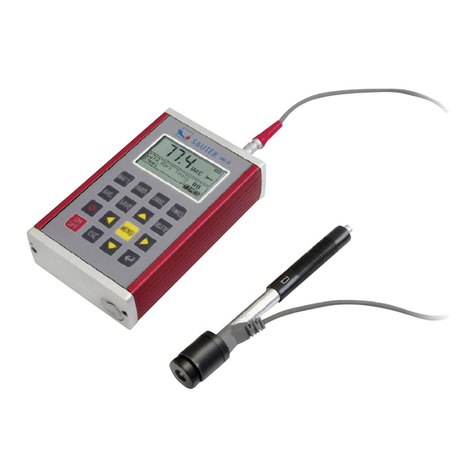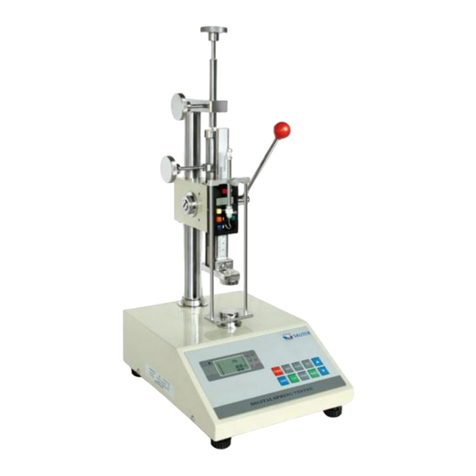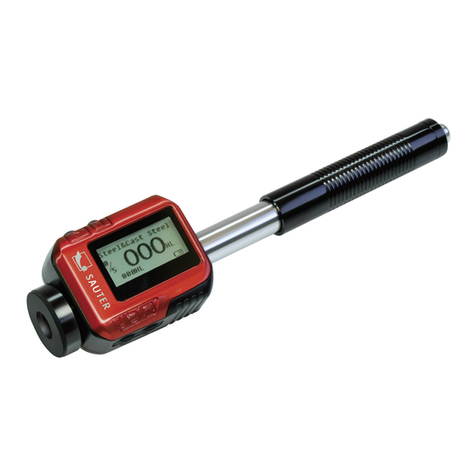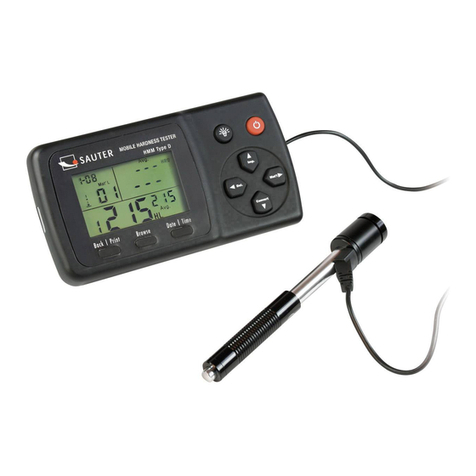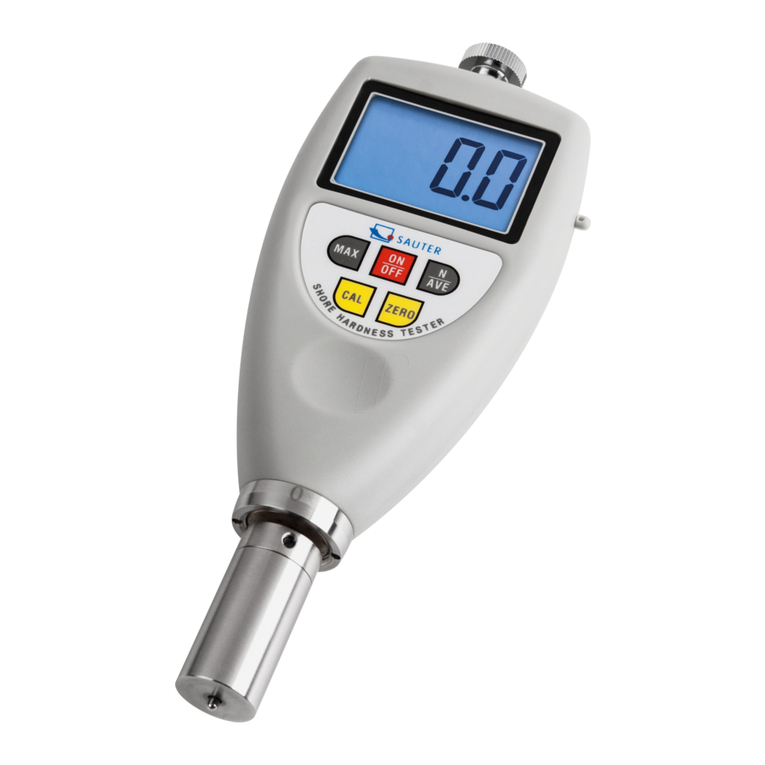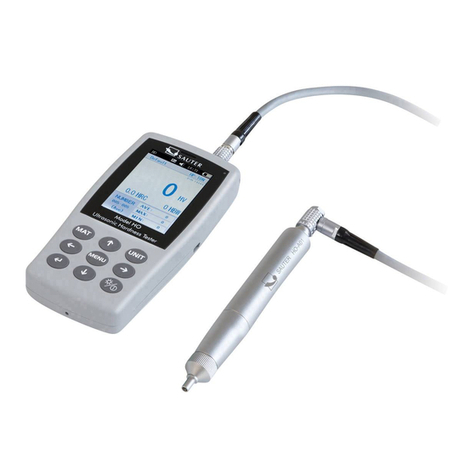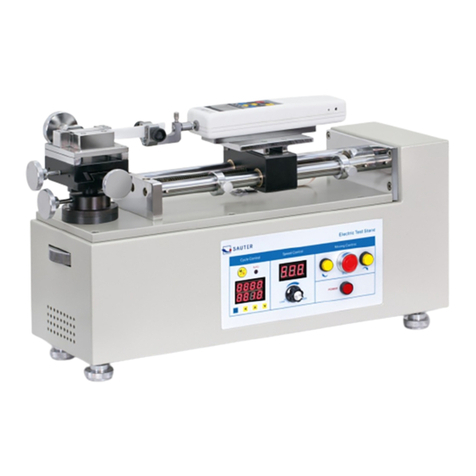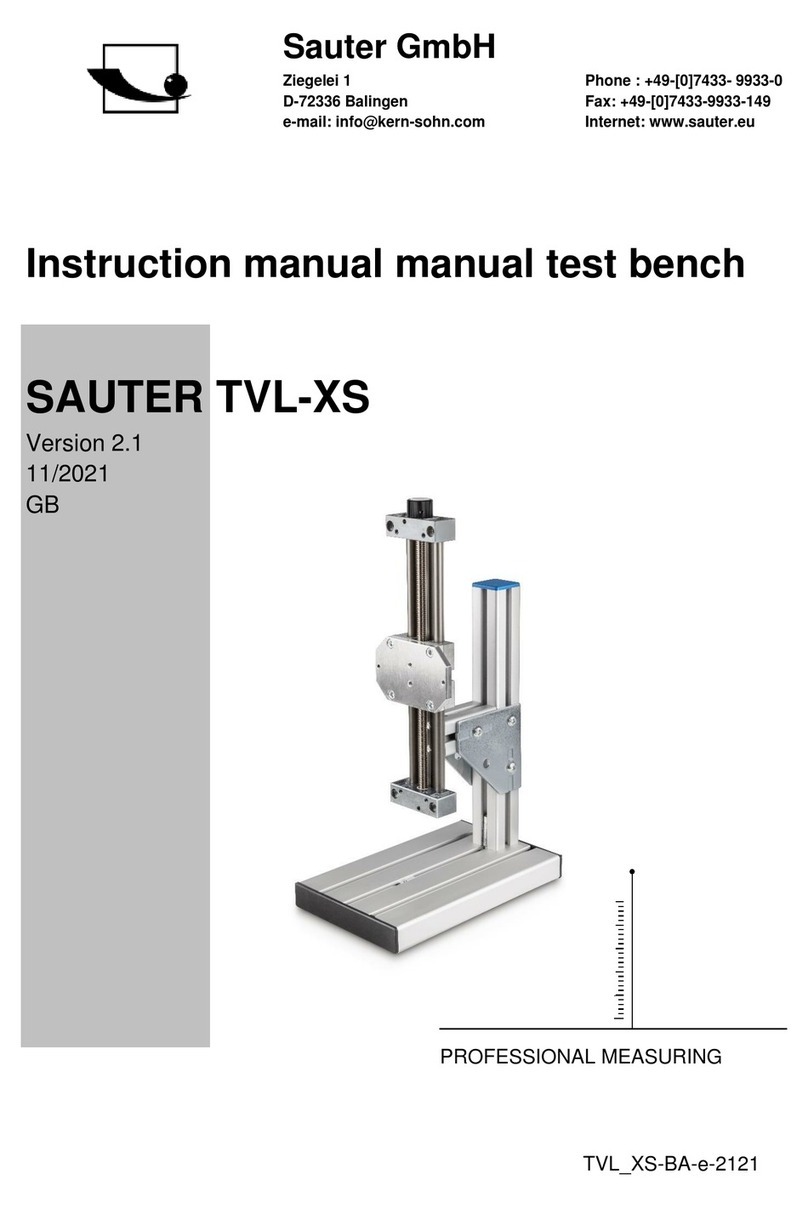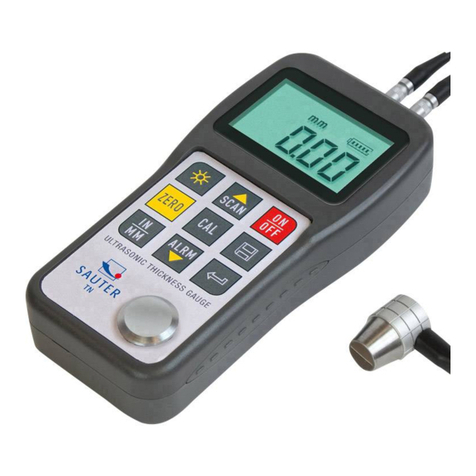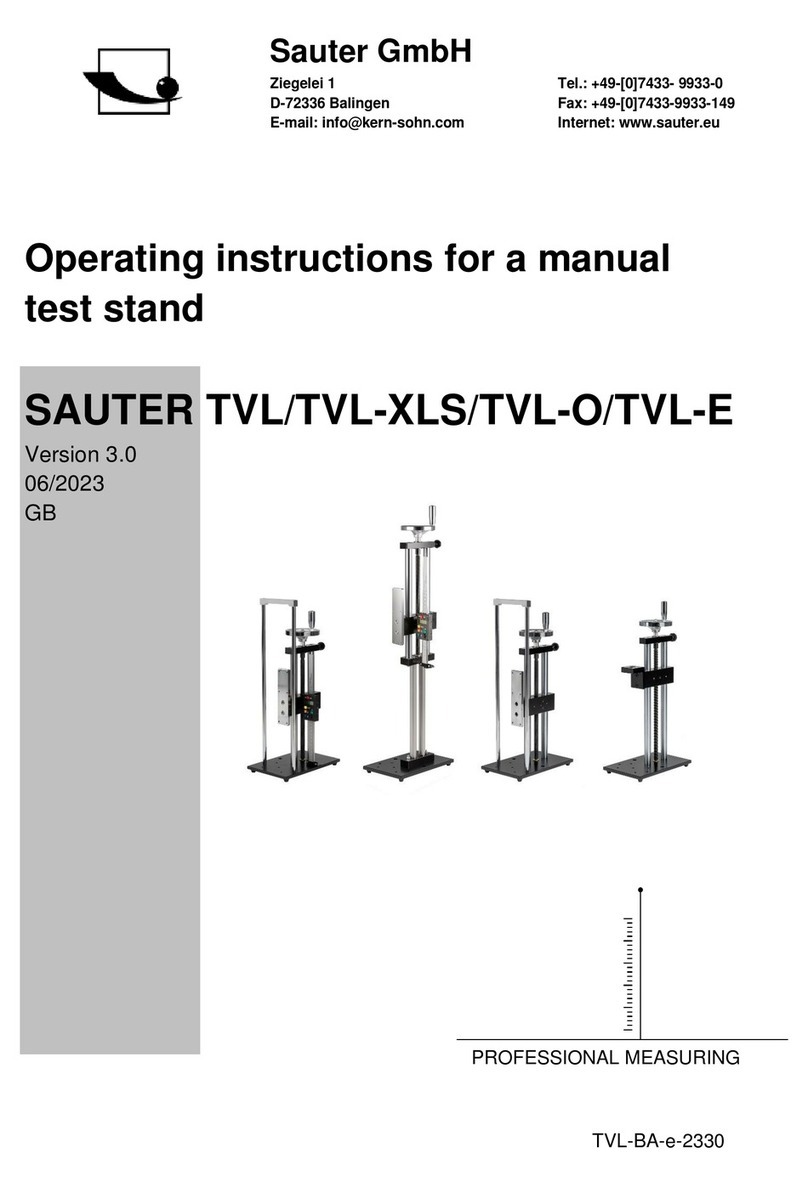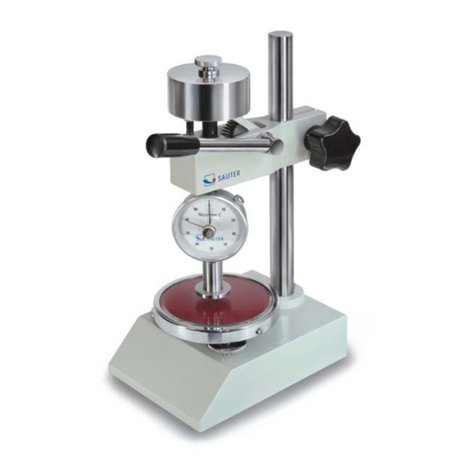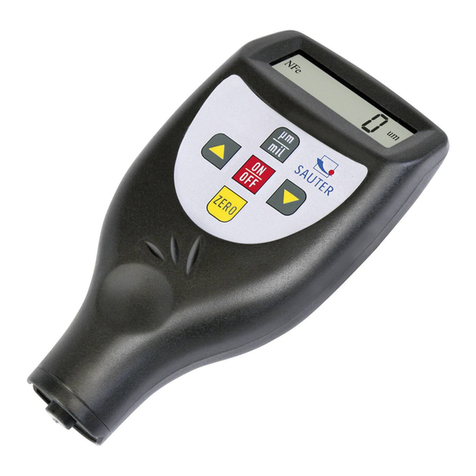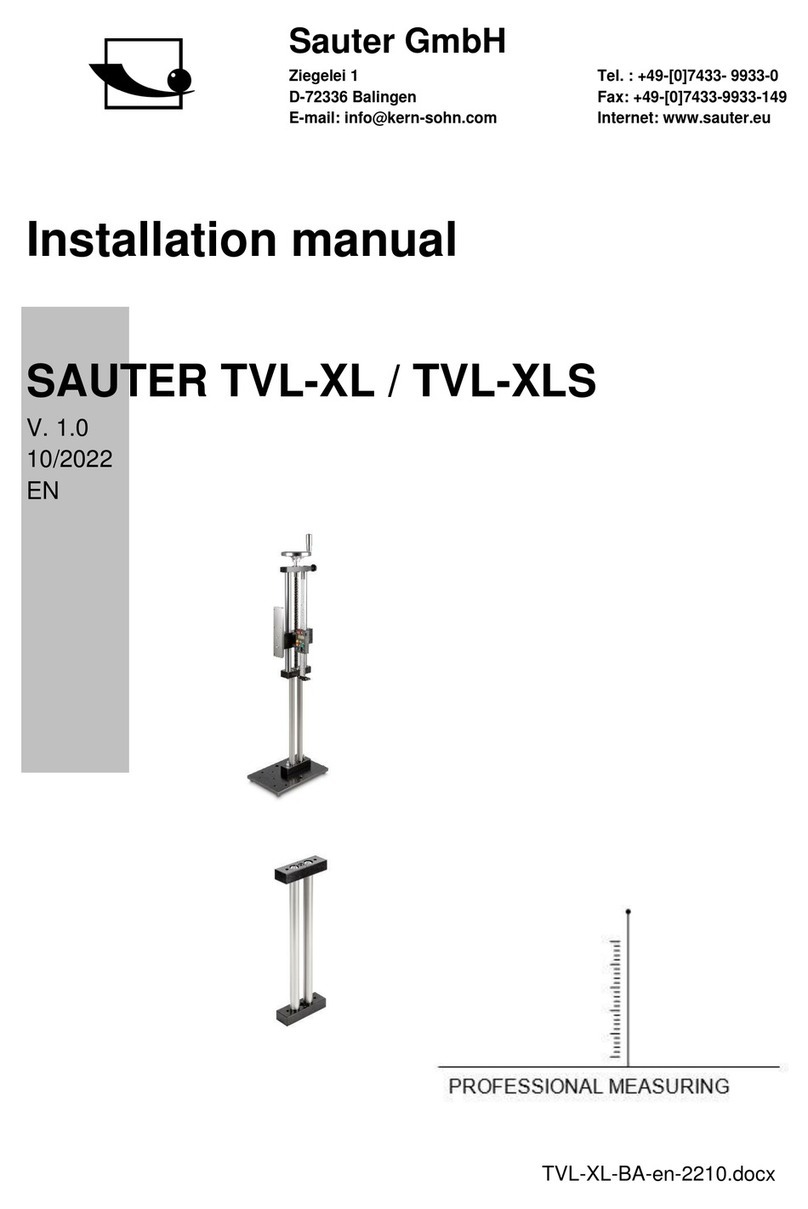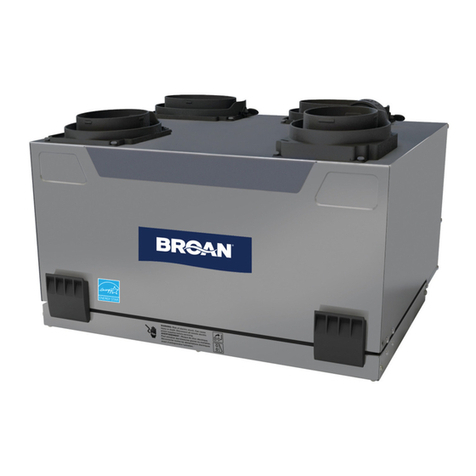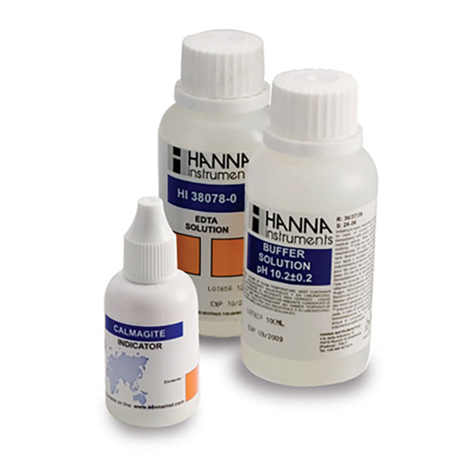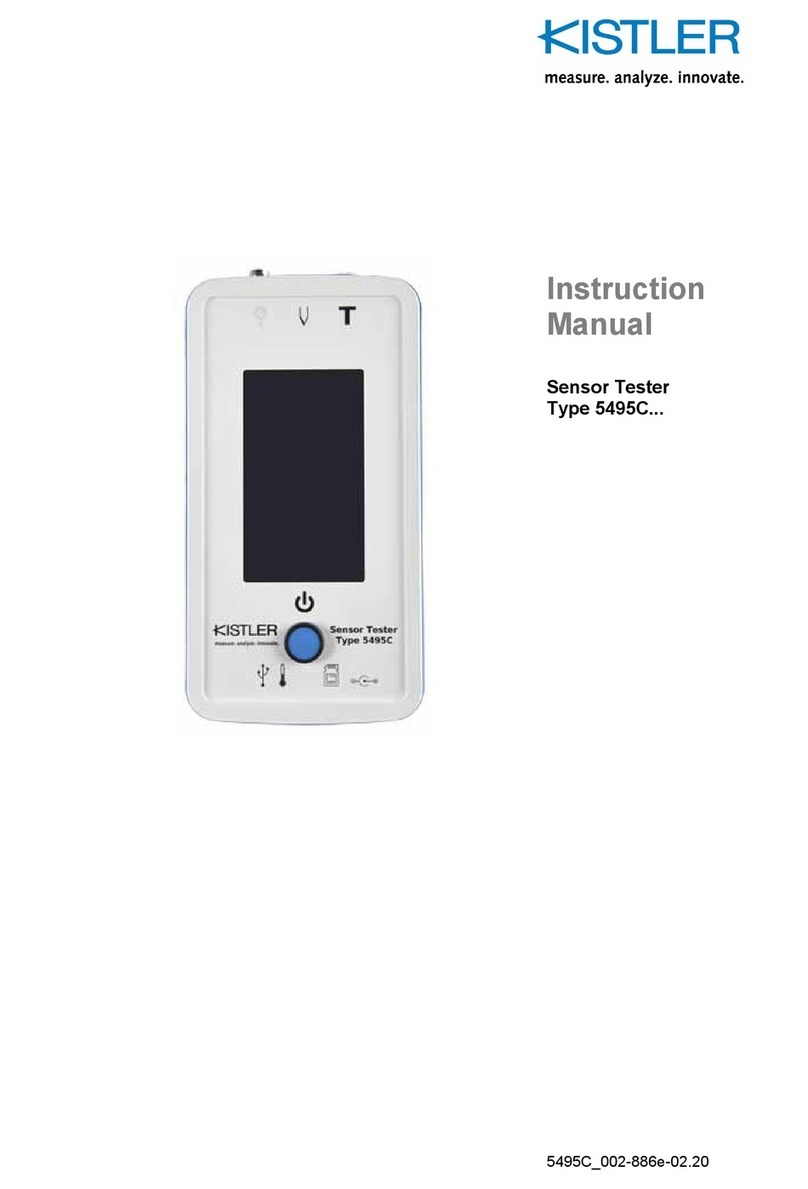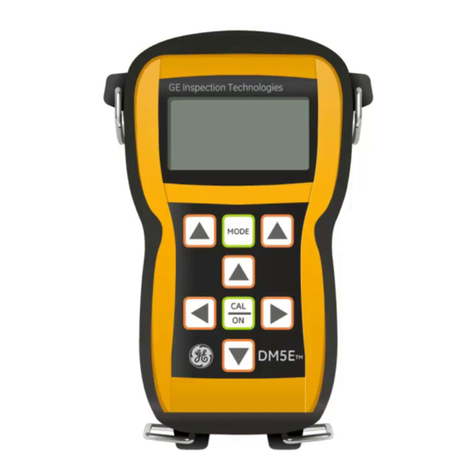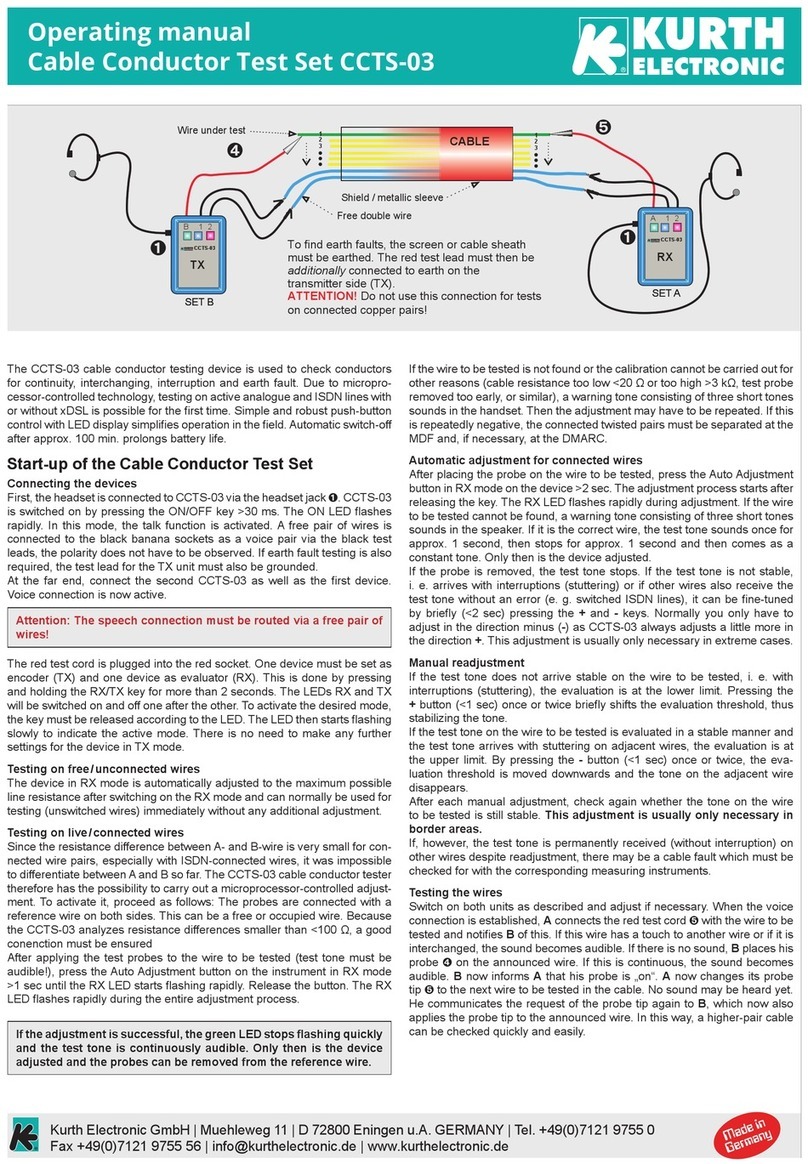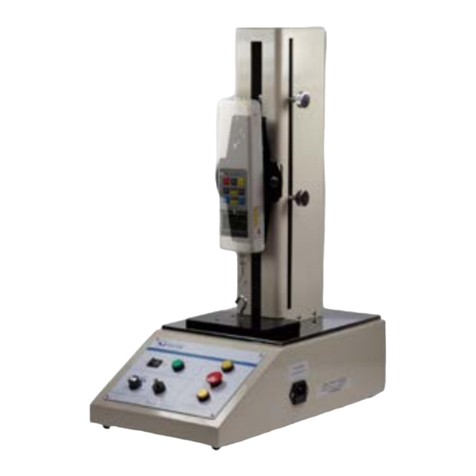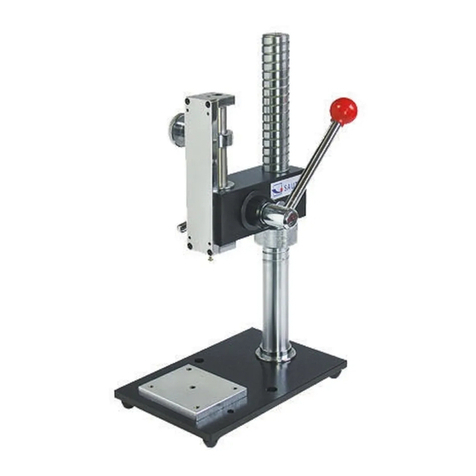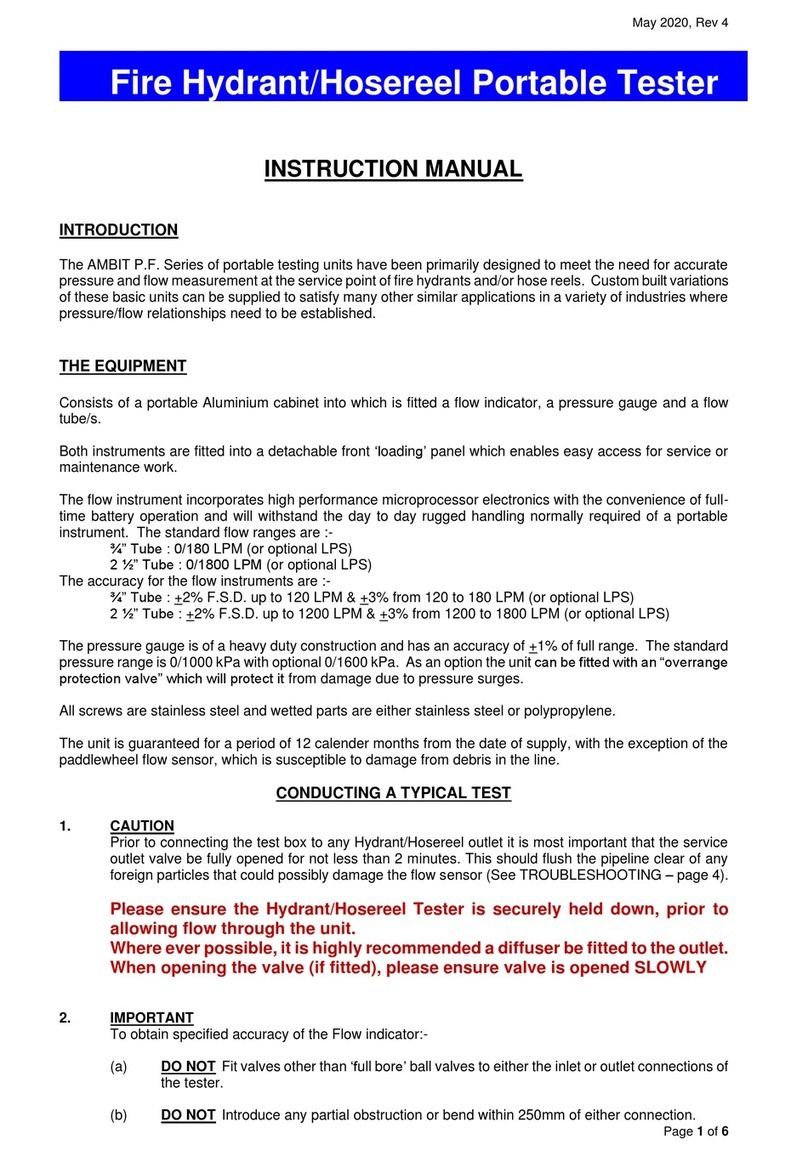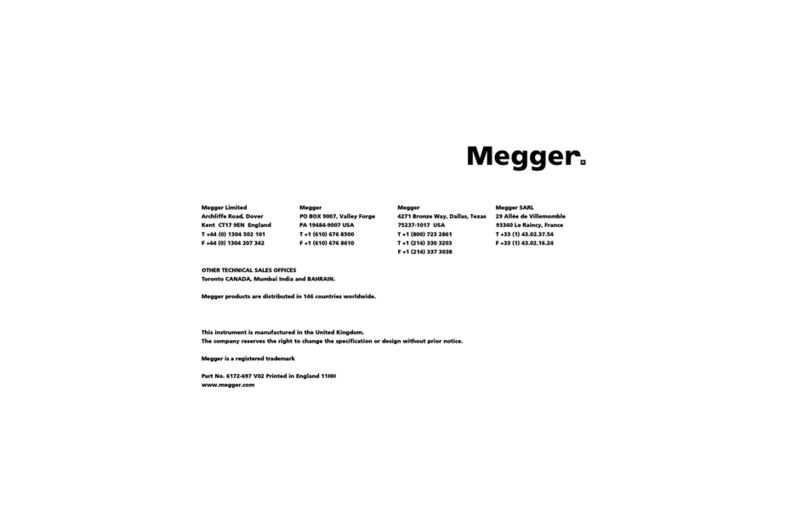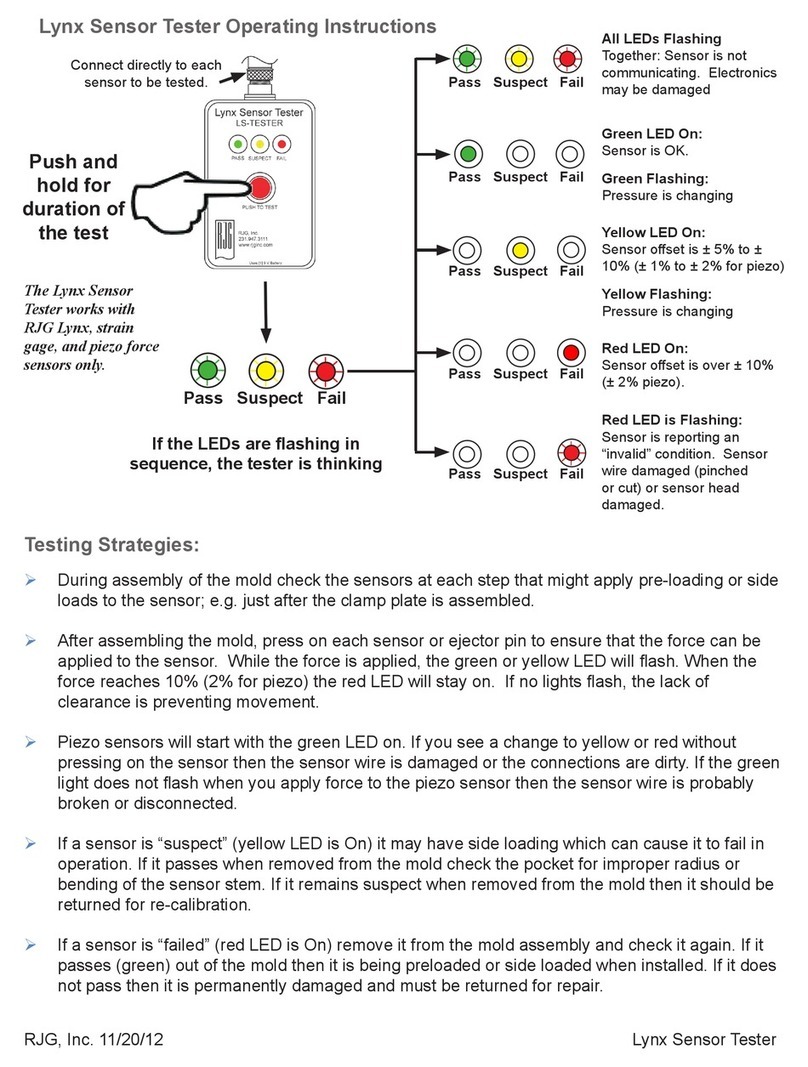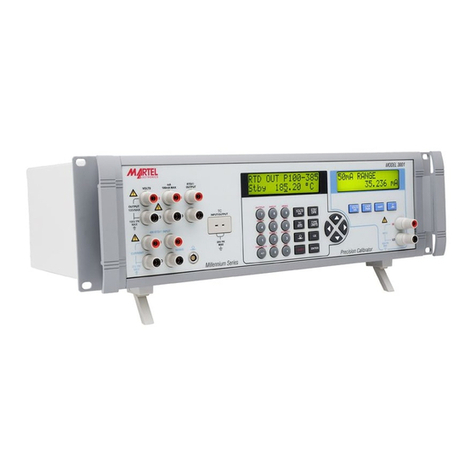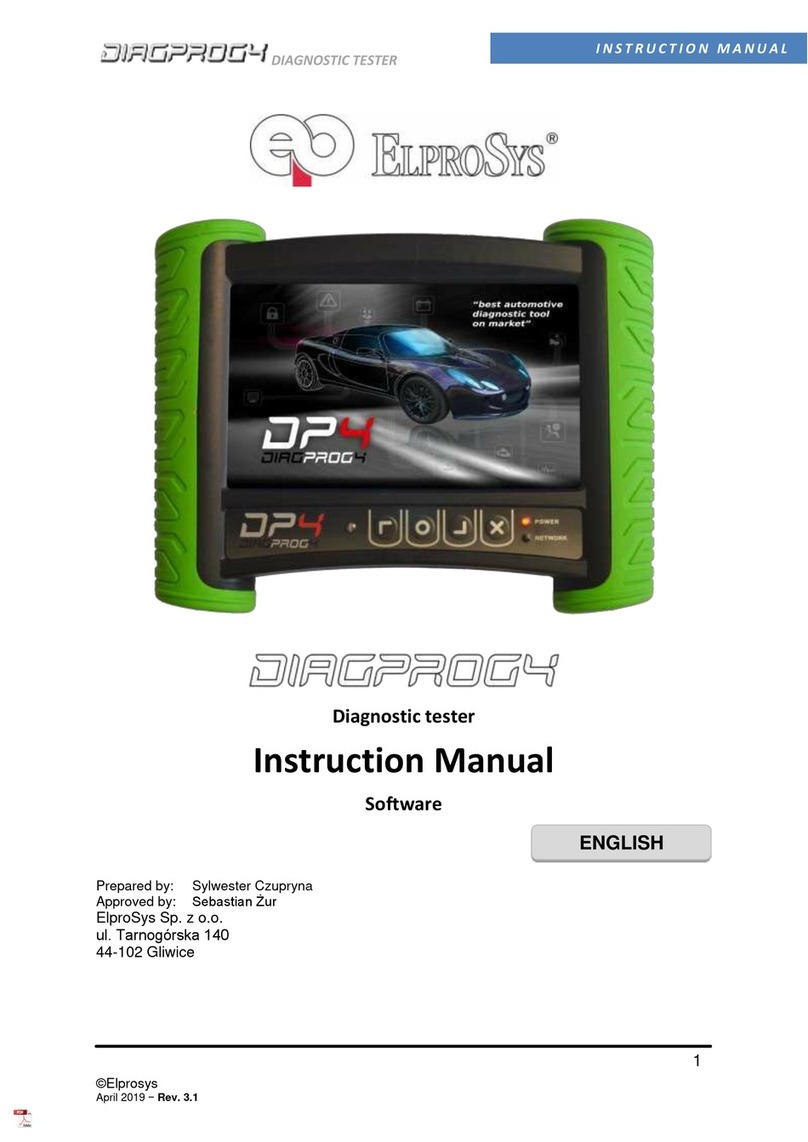
Sauter GmbH
Ziegelei 1
D-72336 Balingen
Tel: +49- 0]7433- 9933-199
Fax: +49- 0]7433-9933-149
Internet: www.kern-sohn.com
Instruction Manual
JD
JD-BA-e-1210 1
Thank you for buying a diamond tester of SAUTER. We
hope you are pleased with your high quality product and
with its functional range. If you have any queries, wishes or
helpful suggestions, do not hesitate to call our service
number.
The diamond tester utilises the feature that diamonds have
a very high thermal conductivity. So it can effectively and
quickly distinguish natural diamonds from all kinds of
diamond simulations and metals, except synthetic
moissanites, which have a thermal conductivity similar to
diamonds.
Table of contents
1. Features
2. Specifications
3. Indication of parts
4. Preparation
5. Testing
6. Maintenance
7. Caution
8. Limited Quality Warranty
9. Declaration of Conformity
1. Features
This diamond tester is equipped with ultraviolet light to test
the fluorescent reaction of stones.
It is easy to calibrate with the calibration ring and it has got
a Level Meter Volume to match different sizes of stones. It
can distinguish stones as small as 2pt (note: 72pt= 1inch=
2.54cm). The diamond tester can be connected with an
A/C adapter for a long time indoor use. It has got a 2 years
manufacturer’s warranty.
2. Specifications
Working voltage: 9V monobloc battery, 6F22 battery or
AC adapter, 110V-240V, DC 9V, optional
Sensor’s warm-up time: about 25 seconds
Working time: about 5 hours of continuous use
Working temperature: 15°C to 30°C
Dimensions: 166mm x 30mm x 21mm
(L x W x D)
Net weight: 55g (without battery), 100g (including battery)
3. Indication of parts
1. Level Meter
2. Slide Switch
3. Ready Lamp
4. Power Lamp
5. Sensor
6. Ultraviolet Lamp
7. DC 9V socket for AC adapter
8. Battery Cover
9. Electricity Conductive Panel
10. Level Meter Volume
11. Sensor Protective Cover
12. Test Base for loose Stones
4. reparation
The 9V monobloc battery has to be inserted into the tester,
then switch (2) has to be slid to diamond, the Power red
lamp (4) will light up and the Ready green lamp (3) will be
blinking. It has to be waited for about 25 seconds because
the sensor has to be warmed up.
When the green lamp (3) lights up, the buzzer will beep a
very short time to signalise that the tester is ready for use.
At this time it has to be assured that the LED level meter
bar (1) is lighted at the first column. If not, the Level Meter
Volume has to be adjusted to set the bar lighted at the first
column. Now the tester can be used.
5. Testing
- A gem cloth has to be used to do normal clean work on
the stones to be tested.
- If the jewellery is mounted on any part, it has to be held
with one hand.
- For loose stones, it is essential to place the stone on the
testing base (12) and hold the testing base with one hand.
The other hand holds the tester. With one of the fingers the
metal plate (9) of the tester has to be contacted
permanently.
- Now the sensor of the tester has to be applied gently
onto the tested stone perpendicularly.
- If the LED lights up to red zone with three periodic beep
sounds, the tested stone is a diamond.
- If all LED bars don’t light up or only go to green or yellow
zone (it varies from different simulations), then the stone is
a simulation.
- When testing metal objective, for example, to test a stone
which is set in a ring or an earring etc., the tester will have
